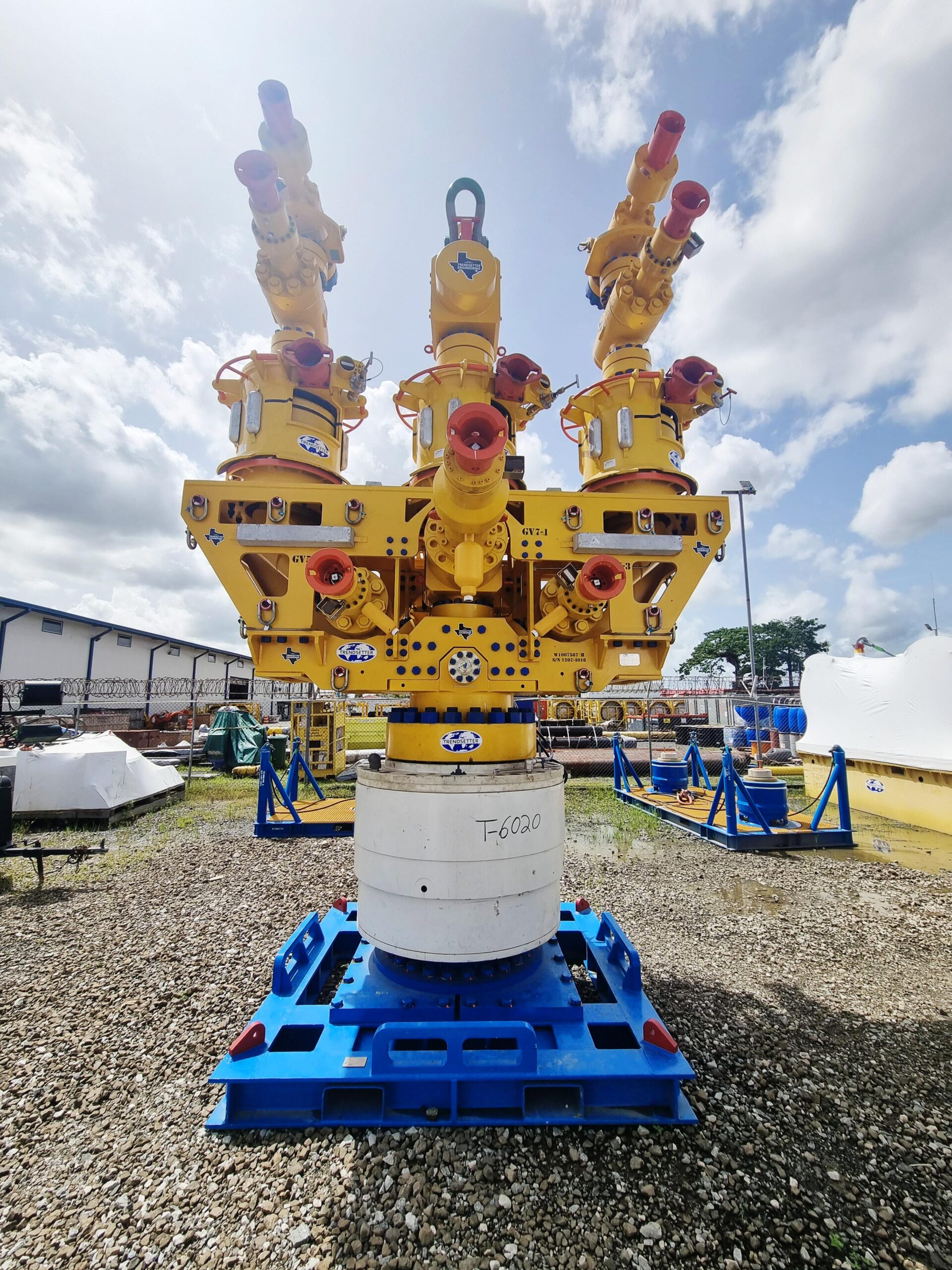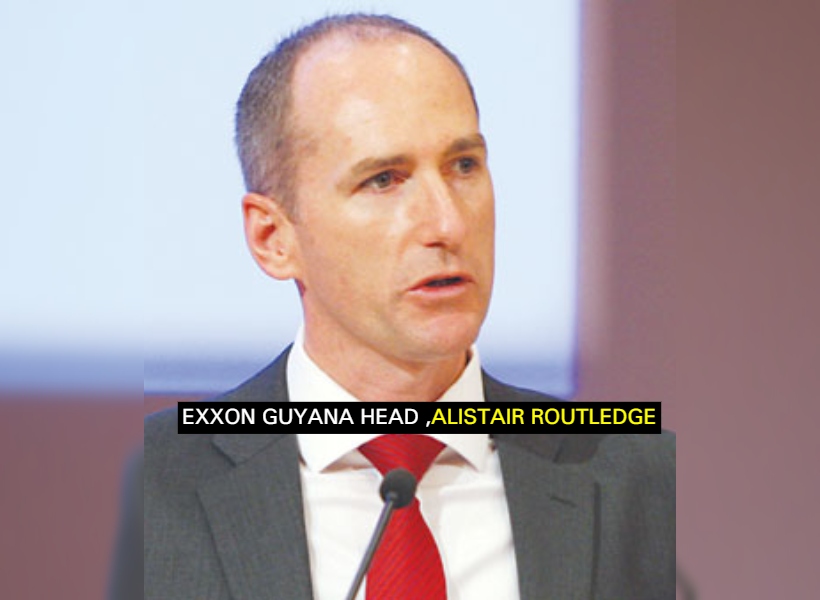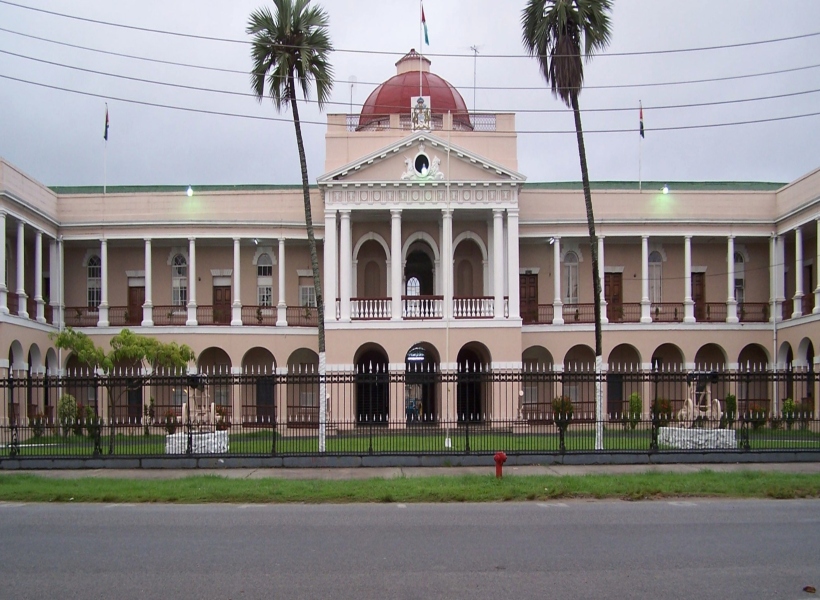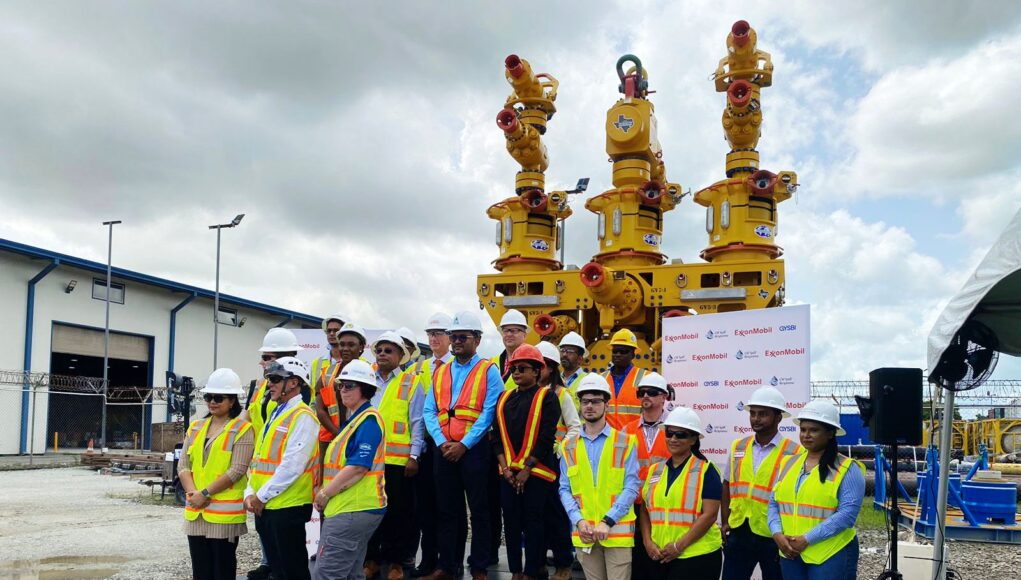Stabroek Block operator, ExxonMobil Guyana today unveiled its capping stack for its Guyana operations—a significant milestone in the country’s oil spill response capabilities. This equipment is one of only 13 such devices in the world that is staged in a host oil-producing nation.
A capping stack is an advanced piece of equipment designed to swiftly halt the flow of oil from a well in the unlikely event of a blowout. It ensures that the impact of any such incident can be effectively mitigated. Comprising valves, rams, and connectors, the capping stack is designed to seal off a wellhead, preventing the uncontrolled release of hydrocarbons and minimizing environmental damage.
At its media event held morning for a first glimpse of the equipment, Alistair Routledge, President of ExxonMobil Guyana, emphasized the rarity and importance of the capping stack. “This is the first capping stack in Guyana and in reality, only one of 13 globally. So only one of 13 in the entire world,” Routledge said.
He further highlighted that ExxomMobil was one of the first global operators to integrate rapid response subsea capping stack technology into its formal global oil spill response plan. “ExxonMobil was one of the very first global operators to integrate rapid response subsea capping stack technology into our formal global oil spill response plan,” Routledge noted, emphasizing the company’s familiarity and expertise with this technology.
Under the company’s Yellowtail Petroleum Production licence, it was required to invest in a capping stack to ensure operational safety.
Moreover, Routledge noted that it would become an integral part of emergency response exercises conducted at the Guyana Shore Base Incorporated (GYSBI). “Moving forward, this new capping stack will become an integral part of those exercises,” he said. He also expressed gratitude to GYSBI for housing the capping stack and other emergency response tools, as well as acknowledging the support from the Ministry of Natural Resources, the EPA, and the CDC.
He was also keen to note that ExxonMobil Guyana’s subscription to this capping stack service is expected to benefit other oil nations in the region. “ExxonMobil Guyana is proud to be the inaugural subscriber to this new Guyana-based capping stack service provided by OSRL (Oil Spill Response Limited). It’s our hope that other operators both in Guyana and the neighboring countries subscribe to this service because that will truly reflect the benefit of bringing this technology to the region,” Routledge stated.
OSRL is a non-profit organization and the largest international industry-funded cooperative which exists to respond to oil spills at any part of the world by providing preparedness, response and intervention services.
While engaging the media, Routledge also underscored ExxonMobil’s dedication to safety and preparedness. “At ExxonMobil Guyana safety is our absolute top priority. Day in and day out, our teams are laser focused on preventing an incident of any size from ever happening.”
He emphasized the company’s capability to handle any potential incidents, “However, in the unlikely event, an incident should occur we have state of the art response capabilities in the country and the financial resources to meet any of our requirements.”
In addition to the capping stack, Routledge mentioned the comprehensive emergency response toolkit housed at GYSBI, which includes containment booms, skimmer devices, dispersants, and numerous other components.
ExxonMobil’s proactive approach also includes regular joint emergency response exercises at the GYSBI shore base. “We regularly bring our teams together here at the GYSBI shore base to conduct joint emergency response exercises,” Routledge said. He highlighted the importance of these exercises in ensuring preparedness and maintaining the equipment’s readiness for deployment.
Routledge also reiterated ExxonMobil’s broader commitment to bringing world-class facilities and equipment to Guyana. “We are bringing the very highest standard of facilities and equipment to Guyana, given the unique scale of the operation and the commitment of partnership that we have with the people in the country of Guyana,” he said.
He referenced the recent graduation of the first 24 technicians from the Paul Graham Training Center in Pourt Mourant, Berbice, as an example of their investment in high standards of training and safety. This facility, which simulates offshore work environments, is also one of only 13 of its kind in the world.
In concluding his remarks, Routledge emphasized the company’s hope to never use the capping stack in a real-life scenario but assured its readiness. “We certainly expect never to use this equipment in real life. But we will continue to look after it and preserve it, ensuring that it is always prepared for deployment and that we have people prepared and ready to do so,” he said.













